This tool takes polygons as an input and applies the voronoi algorithm along edges, giving results similar to a euclidean allocation raster. Unlike euclidean allocation, the source is never transformed from vector to raster. All internal polygon topology remains unchanged, with the exception of internal holes which are filled in the same way the exterior is filled out.
Currently, supported inputs are polygons in GeoPackage (.gpkg), Shapefile (.shp), or GeoJSON (.geojson) formats. For GeoPackages, all polygon layers inside are processed. Outputs retain their original format, projected to EPSG:4326 (WGS84).
The only requirements are to download this repository and install Docker Desktop. Add files to the included inputs directory, where they'll be processed to the outputs directory. Make sure Docker Desktop is running, and from the command line of the repository's root directory, run the following. Note that docker compose up is only required for the first run, or if upgrading from a previous version.
docker compose build
docker compose upPolygons the size of small countries typically take a few minutes, with larger ones taking upwards of 30 min using default settings. Processing time is proportional to total perimeter length rather than area.
There are three user configurable variables defined in config.ini. These don't need to be changed to get started, they're configured to be immediately usable. The first option is a segment value, set to 0.0001 (approx. 10m) by default. This is used as the distance points are set along lines for the voronoi algorithm. The value was chosen to be similar to satellite imagery resolution, which is sometimes used for automatically digitizing shorelines. For planet level geometry, a smaller precision (0.001) helps the algorithm run faster and use less memory. For smaller areas, a higher precision (0.00001) ensures the allocation is as accurate as possible, but takes longer and may fail if there is insufficient system memory. The second variable is for snap, which fixes the points generated along the edges to a grid to account for internal errors caused by spurious precision in geometries. This is set to a default of 0.000001 (approx. 0.1m), providing a good trade-off between speed and accuracy for most inputs. Increasing this value to something like 0.0001 will aggregate points used for voronoi generation together, and may be required for inputs with hundreds of megabytes of coastline data. Note that snapping only occurs for points along edges used to generate voronoi polygons. Internal polygon boundaries are unaffected by this and maintain original precision. For country sized boundaries containing verticies every few meters, reducing snap can simplify the point set used for voronoi generation to stay within the 1GB limit of PostGIS geometry operations.
The overall processing can be broken down into 4 distinct types of geometry transformations:
- make lines from polygons
- make points from lines
- make voronoi from points
- merge polygons with voronoi
Polygon to Line: The first part extracts outlines from the polygon, first by dissolving all polygons together, then by taking the intersection between the outline of the dissolved and the original layer. By intersecting these two together, it retains attribute information of where segments originate from.
| Original Input | Outlines |
|---|---|
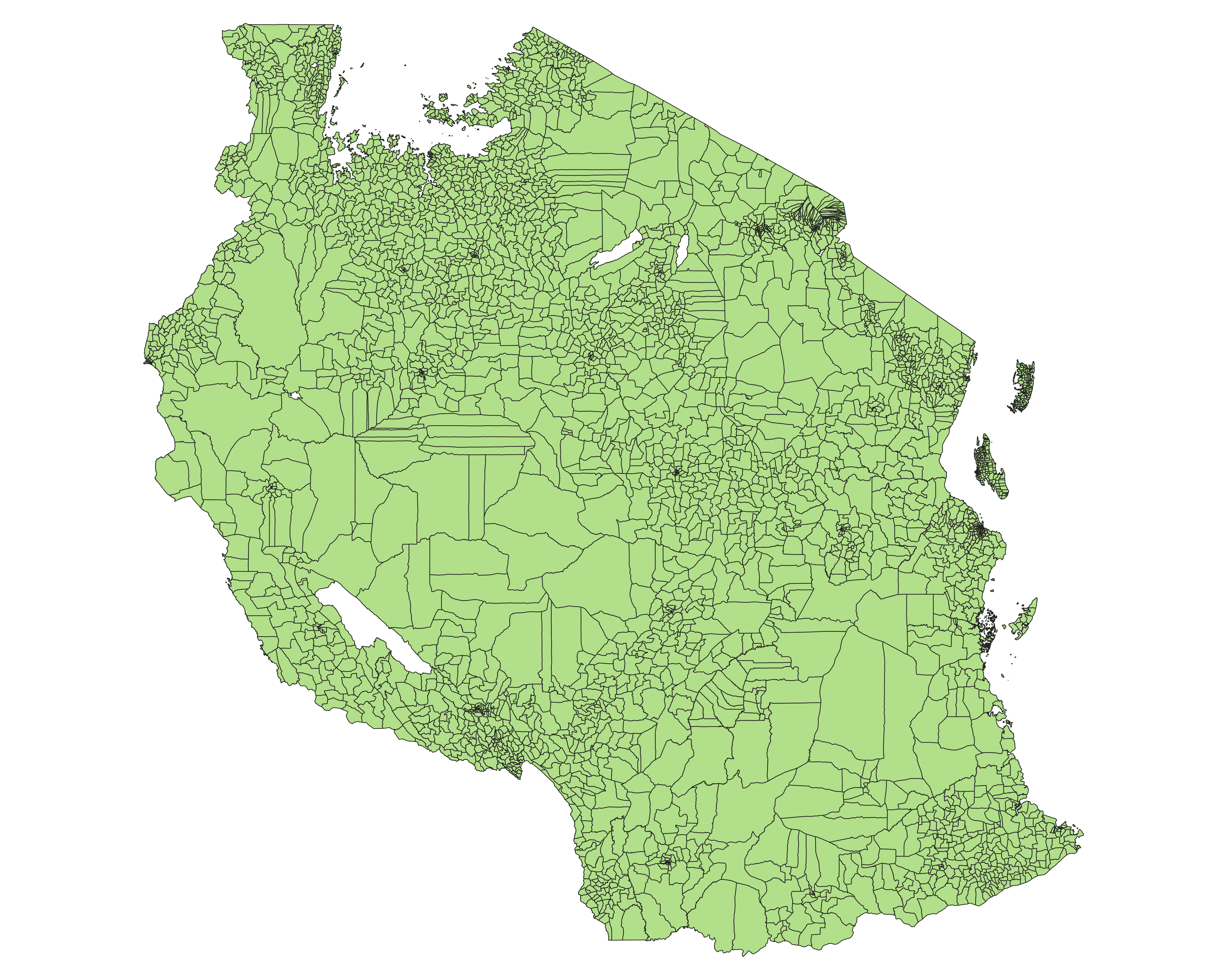 |
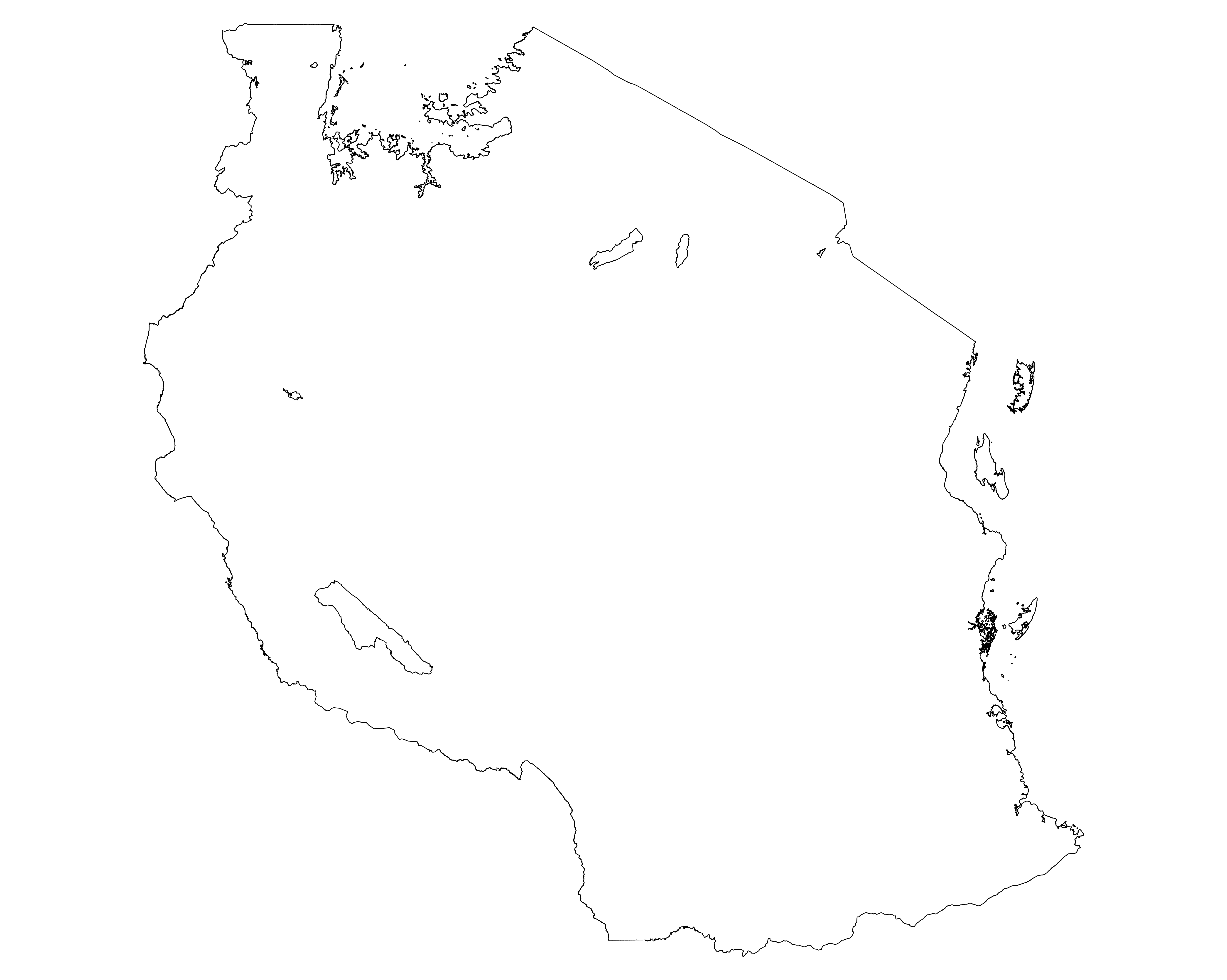 |
Line to Point: Lines are converted to points using two methods. The first set of points are taken from all vertices that make up a line. However, for certain areas like winding rivers and deltas, this in an insufficient level of detail to properly center the resulting voronoi. With just vertices, the center lines would zigzag through gaps instead of going straight through them. Lines are therefore split up into segments based on a configurable distance, with points taken at the breaks between segments.
| Points along River | Final Result along Delta |
|---|---|
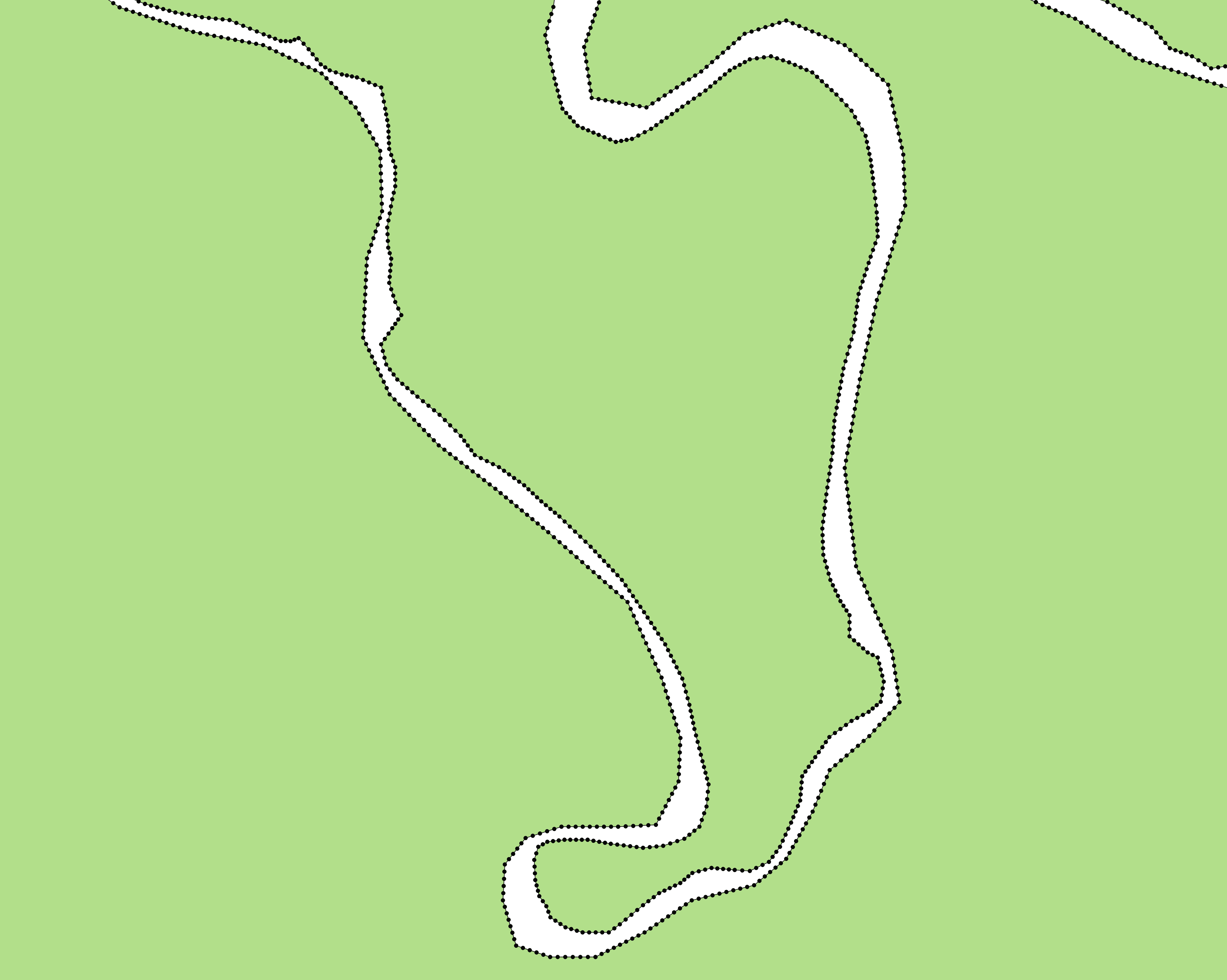 |
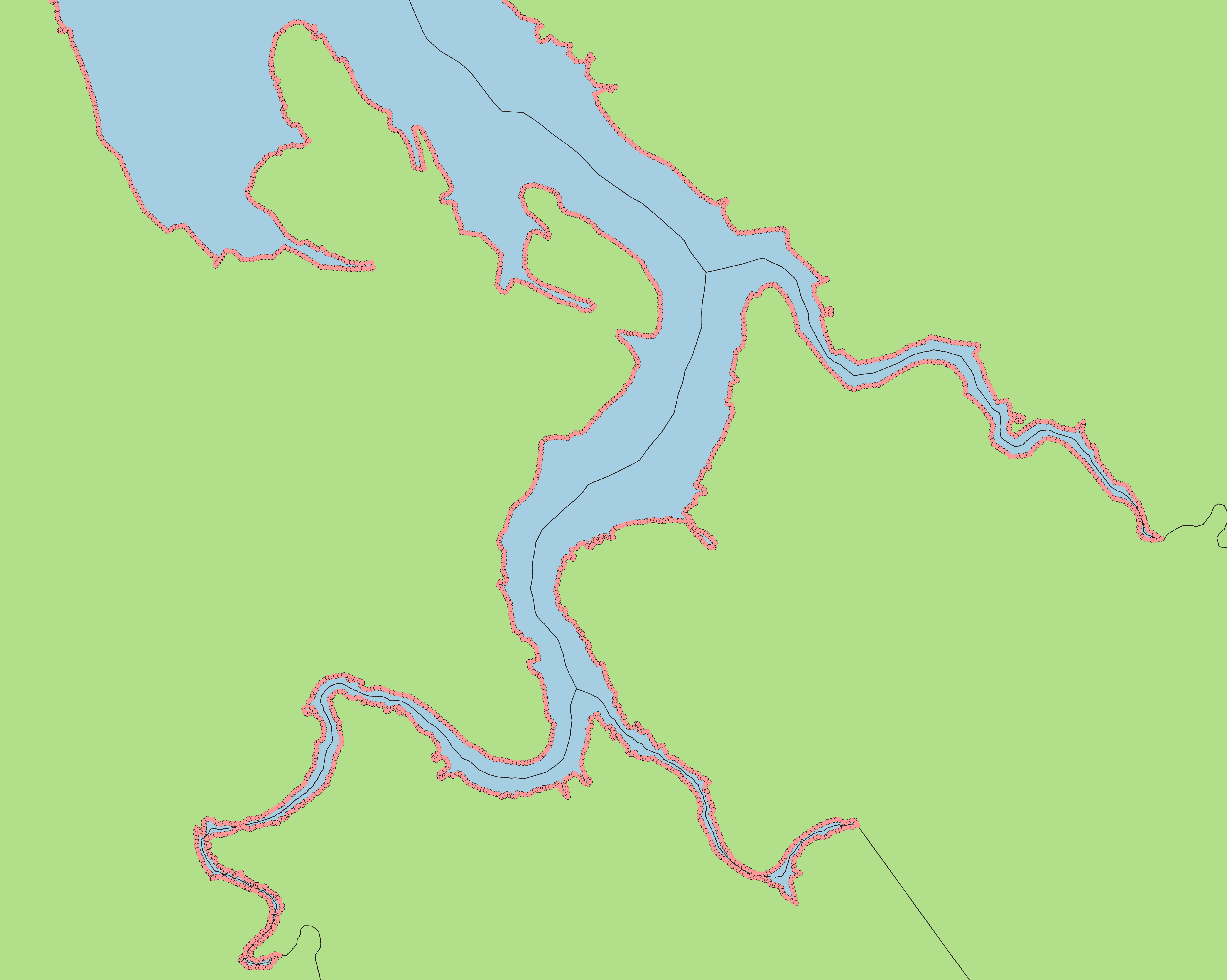 |
Point to Voronoi: For country sized inputs, there may be hundreds of thousands, if not millions of individual voronoi polygons created in this step. Because each individual section retains attribute information of what polygon it originated from, they can be dissolved together to a simplified output.
| Points with Voronoi | Voronoi Only |
|---|---|
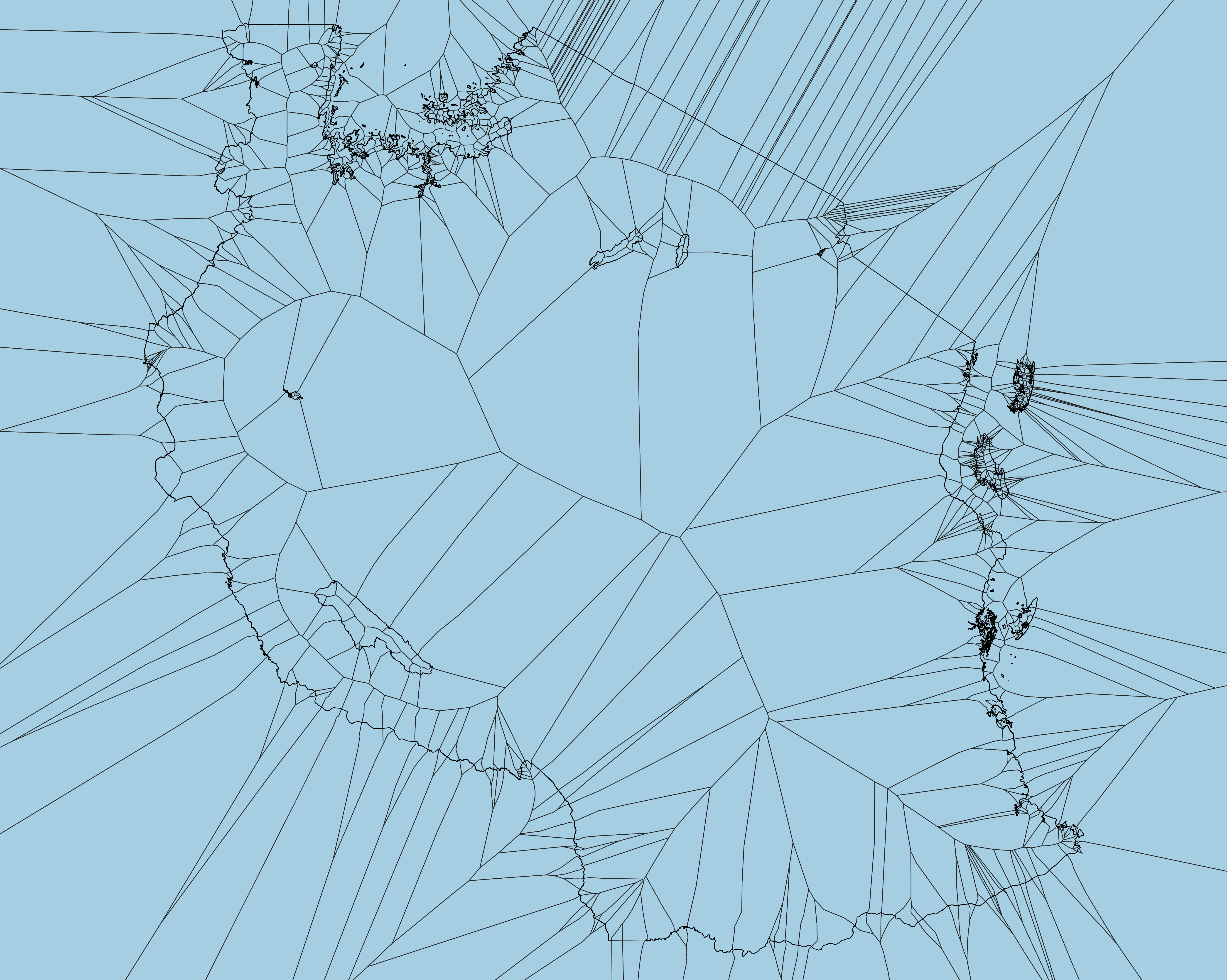 |
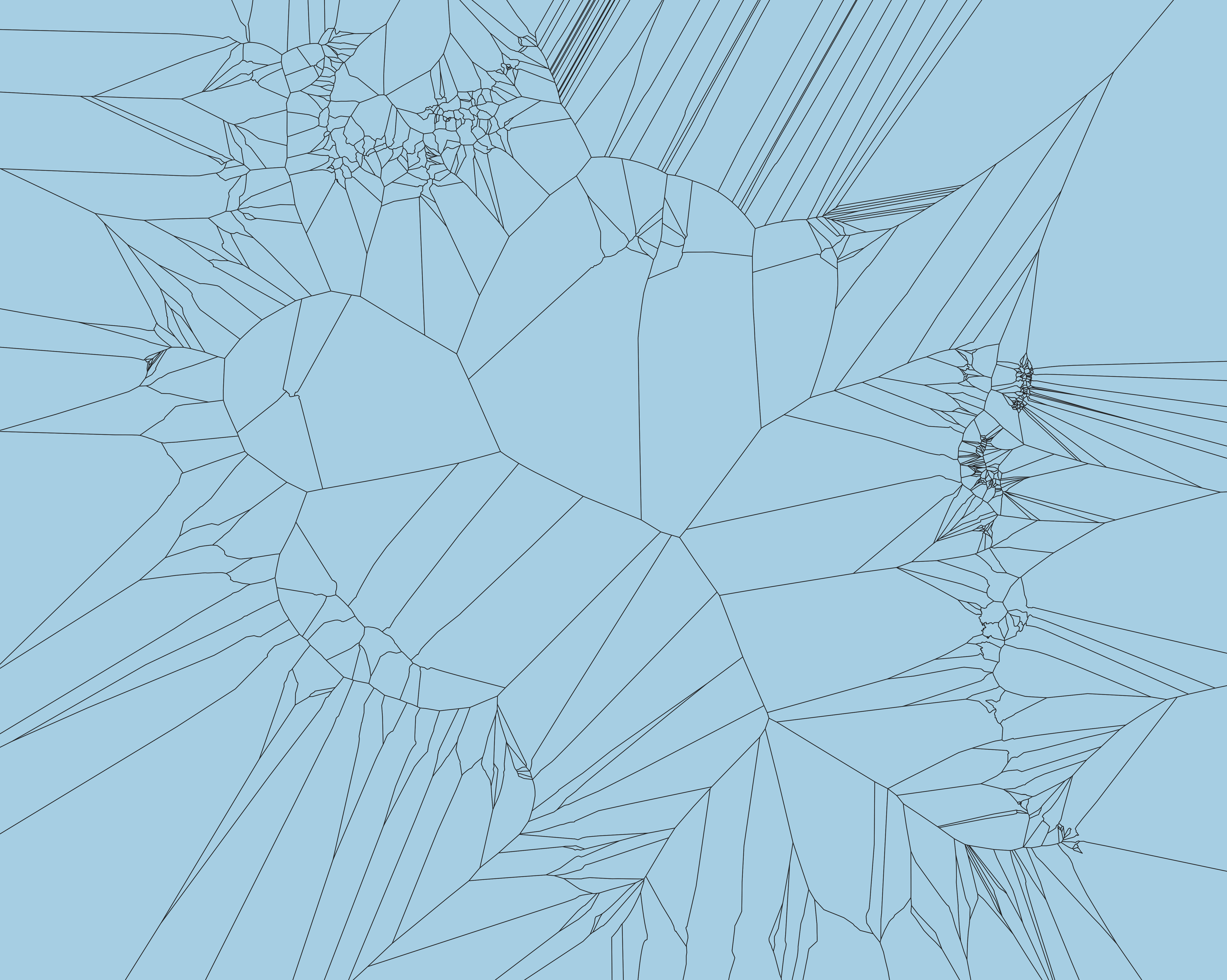 |
Polygon-Voronoi Merge: The original polygon is overlayed in a union with the voronoi. Boundaries from the inner area are kept from the original, dissolved with polygons containing matching attributes from the outside area. The dissolved layer is the final output of the tool.
| Original over Voronoi | Final Output |
|---|---|
 |
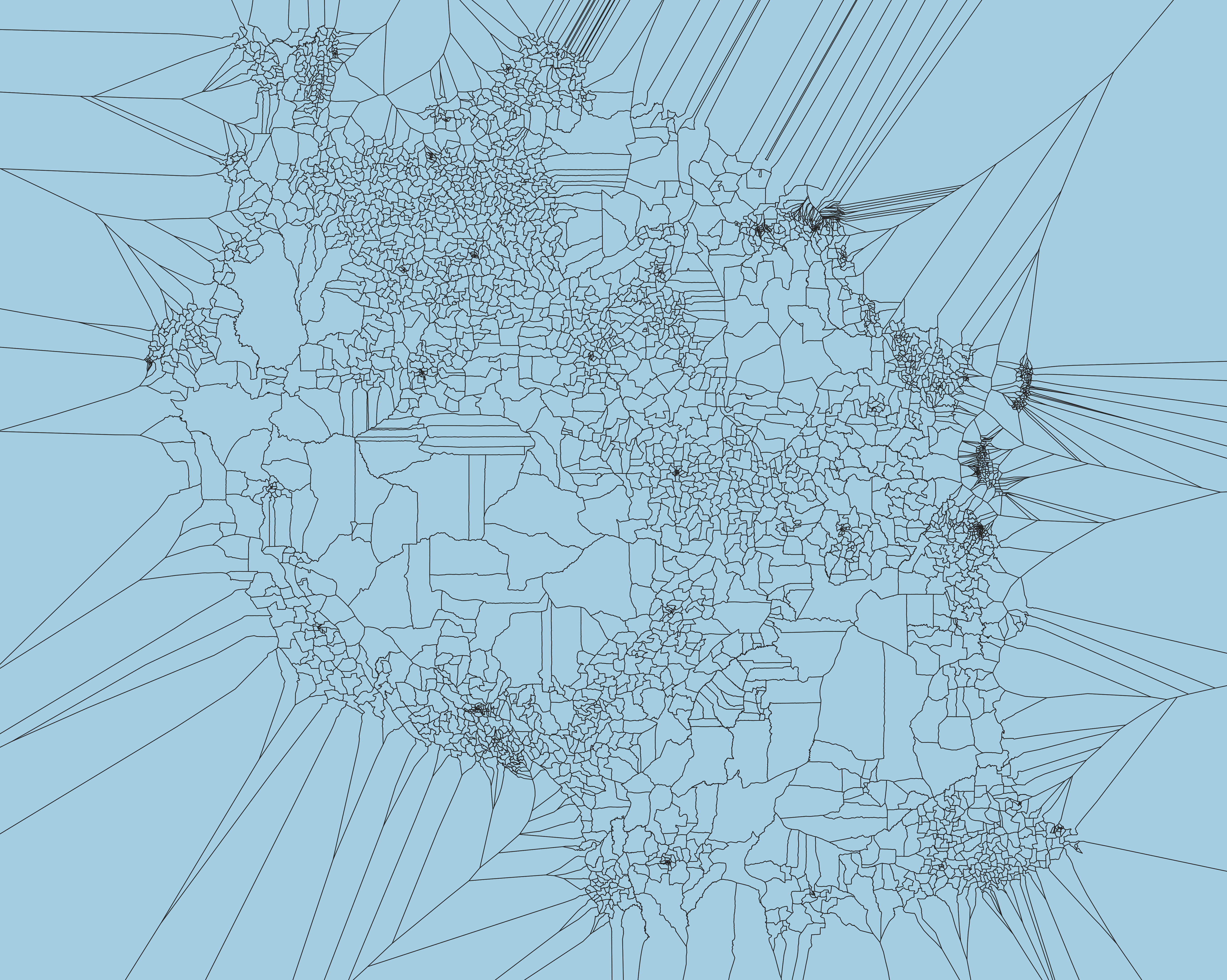 |
One original use case for this tool was resolving edge differences between different levels of administrative boundaries, where some layers included water bodies but others did not. The United Republic of Tanzania is used in this example as it contains many elements that have been difficult to resolve in the past: lakes along international boundaries, internal water bodies shared by multiple areas, groups of islands, etc. The diagram on the left shows how the ADM3 layer would appear in a global edge-matched geodatabase. The diagram on the right shows how water areas are allocated compared to the original.
| ADM0 over Voronoi | Original vs ADM0 edges |
|---|---|
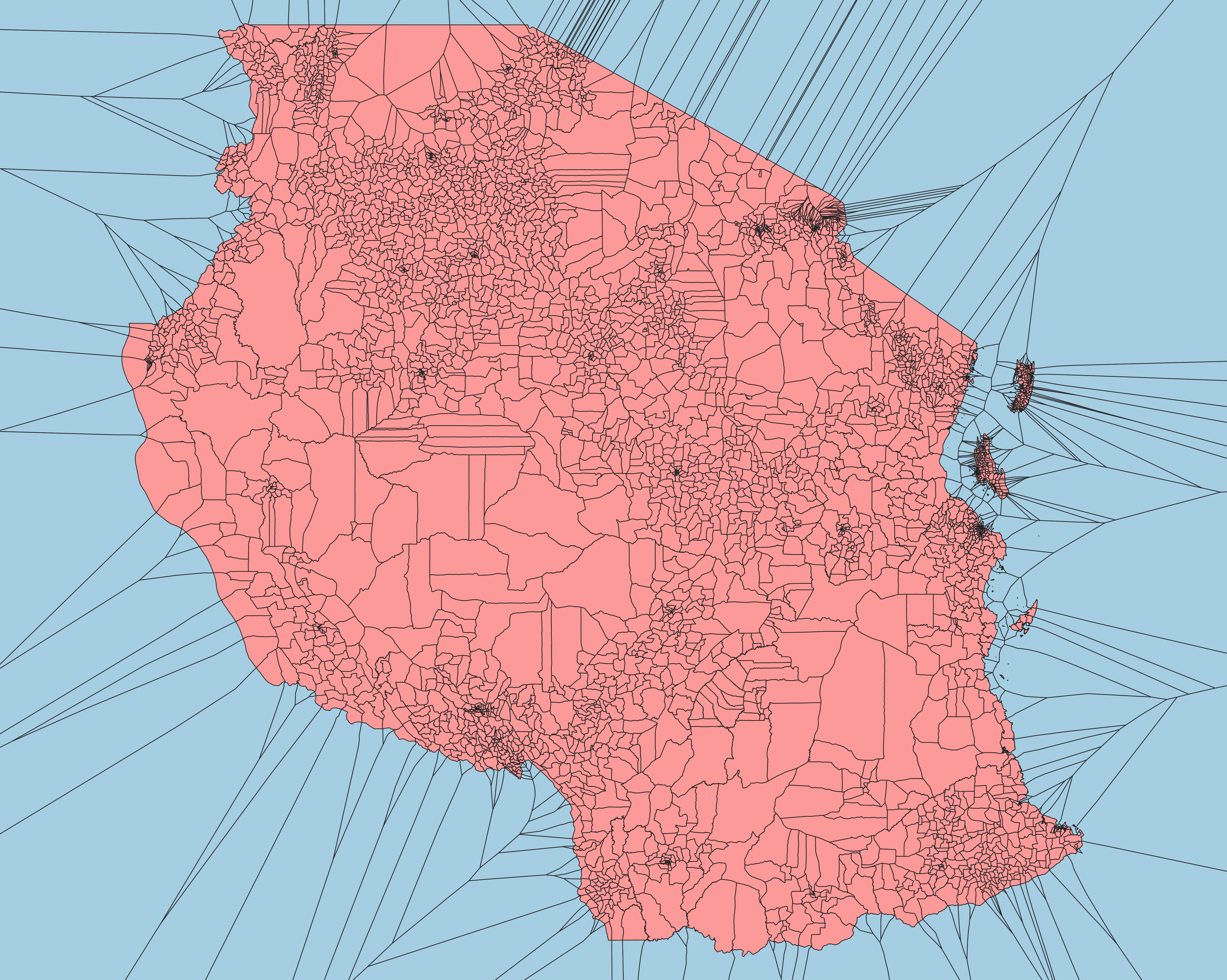 |
 |
The other original use case envisioned for this tool is resolving edges between boundaries where there are significant gaps or overlaps. Where this occurs, a separate topologically clean layer is required to set boundary lines, after which the process is similar to the above.
| Topologically clean ADM0 with areas of interest |
|---|
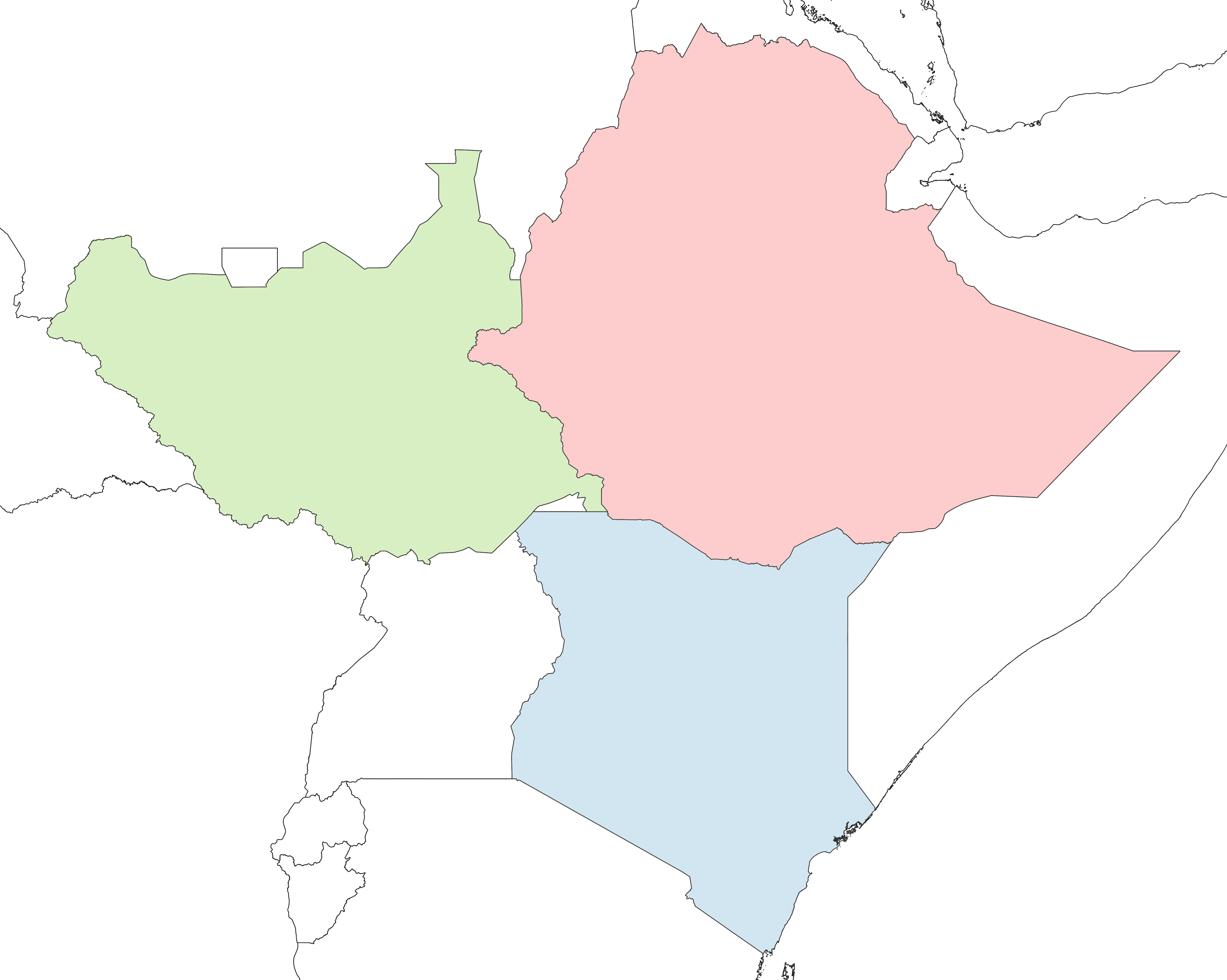 |
| Original boundaries | Clipped voronoi boundaries |
|---|---|
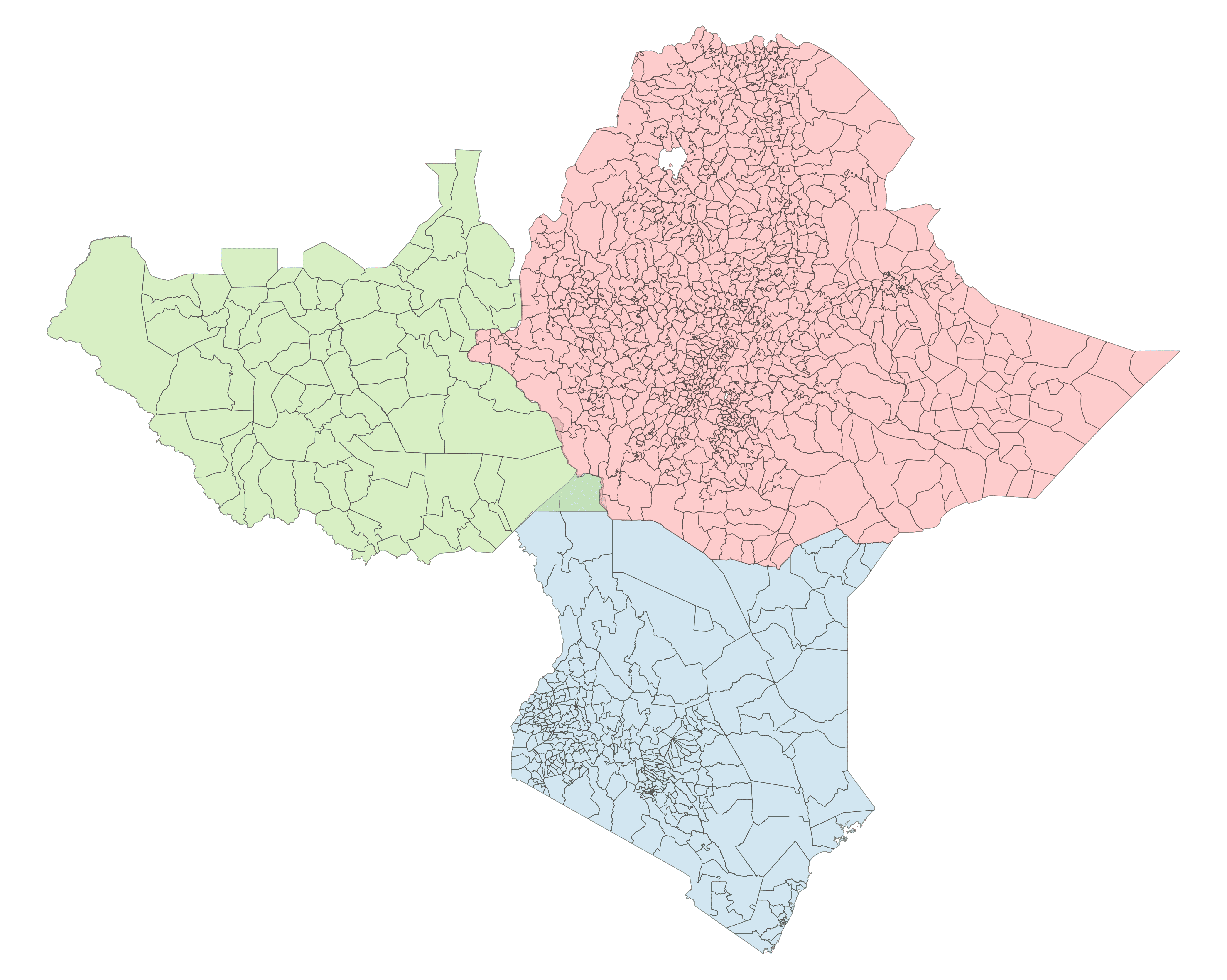 |
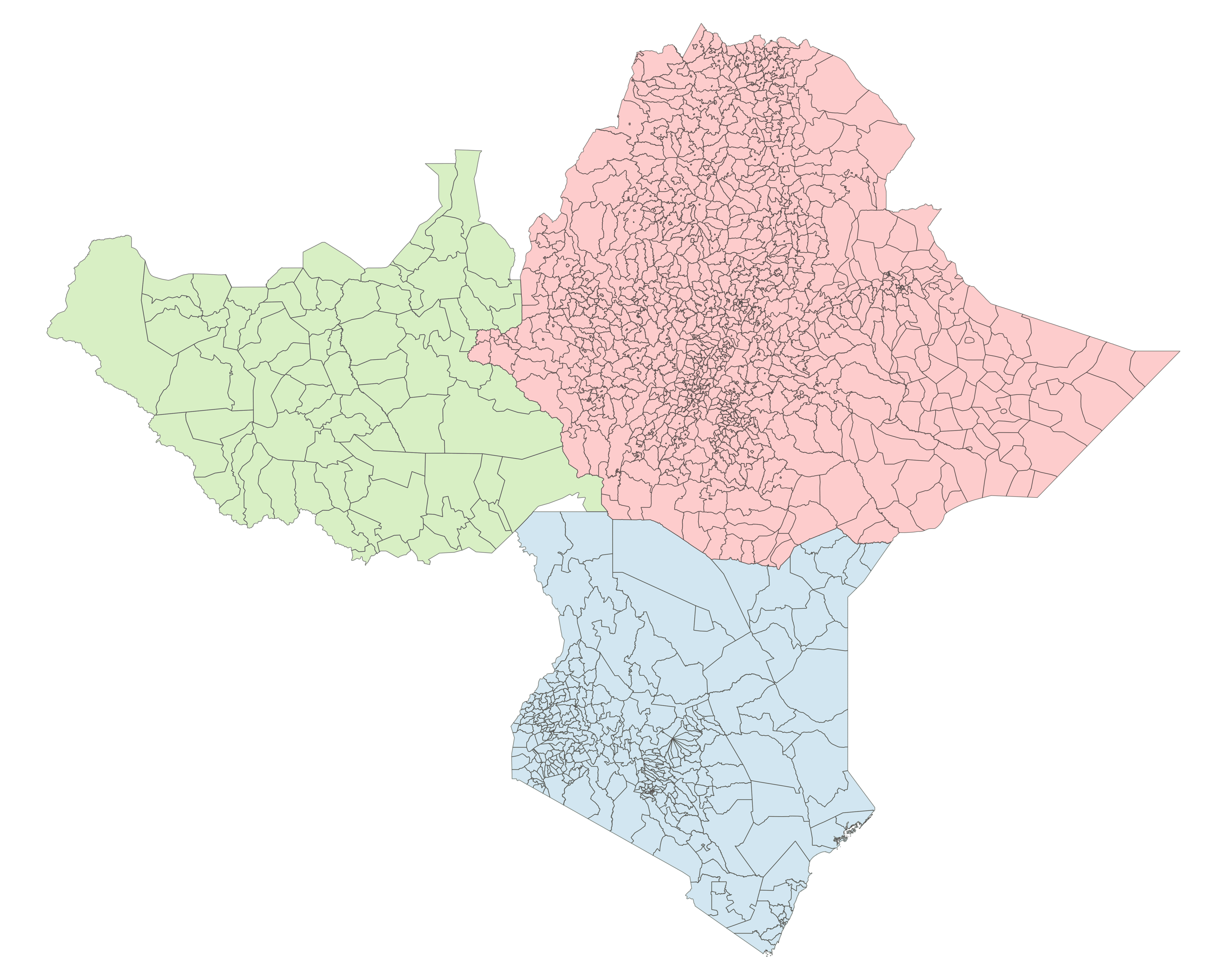 |
| Original boundaries (tri-point) | Clipped voronoi boundaries (tri-point) |
|---|---|
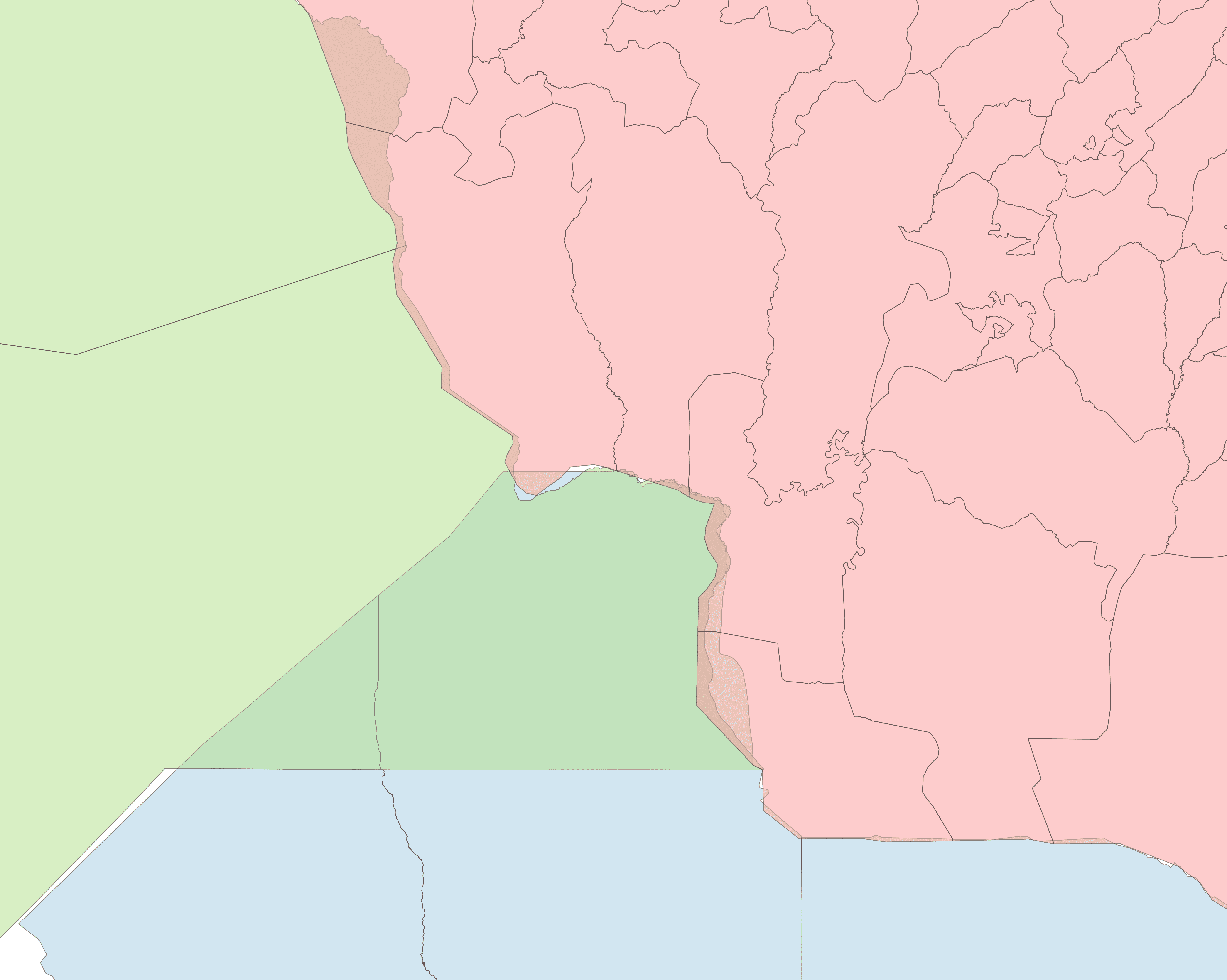 |
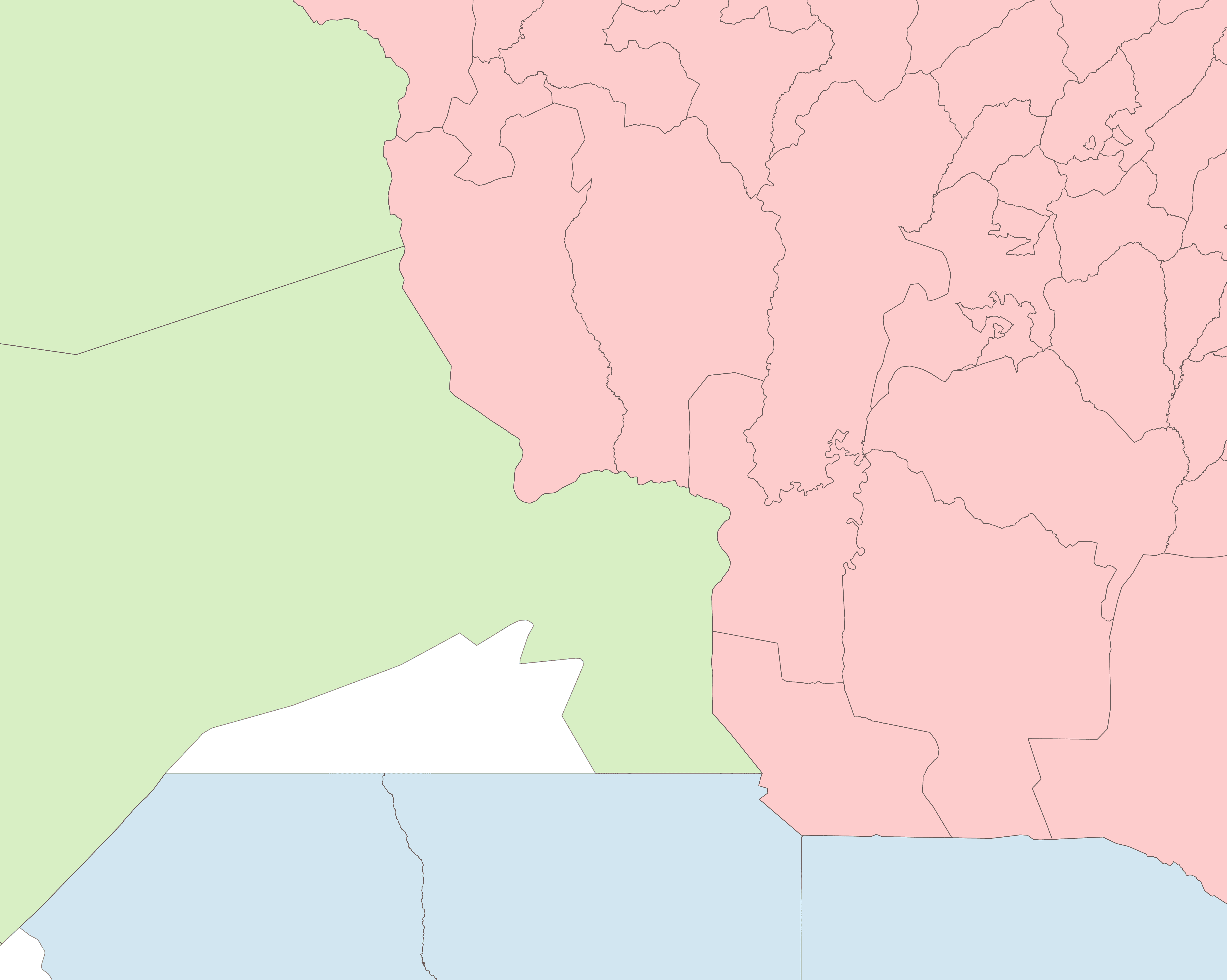 |
The use case above demonstrates how useful it is to have a topologically clean global ADM0 layer. Few portray disputed areas properly, and for those that do have accurate internal boundaries, coastlines may lack in detail compared to other sources. OpenStreetMap has very detailed coastline data available as Shapefiles, and this can be integrated with ADM0 datasets in the same way as above.
| World ADM0 with Voronoi | Voronoi Only |
|---|---|
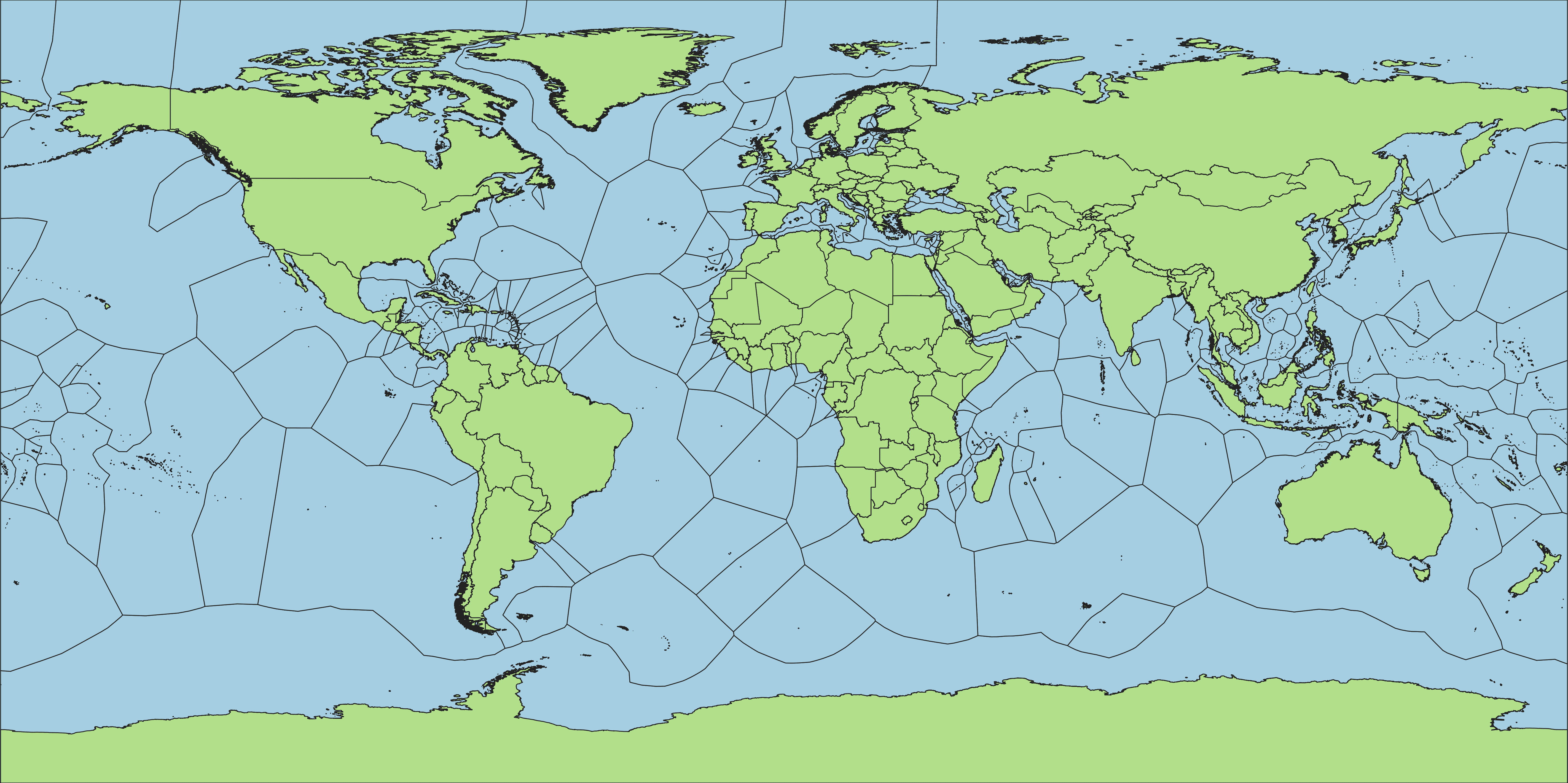 |
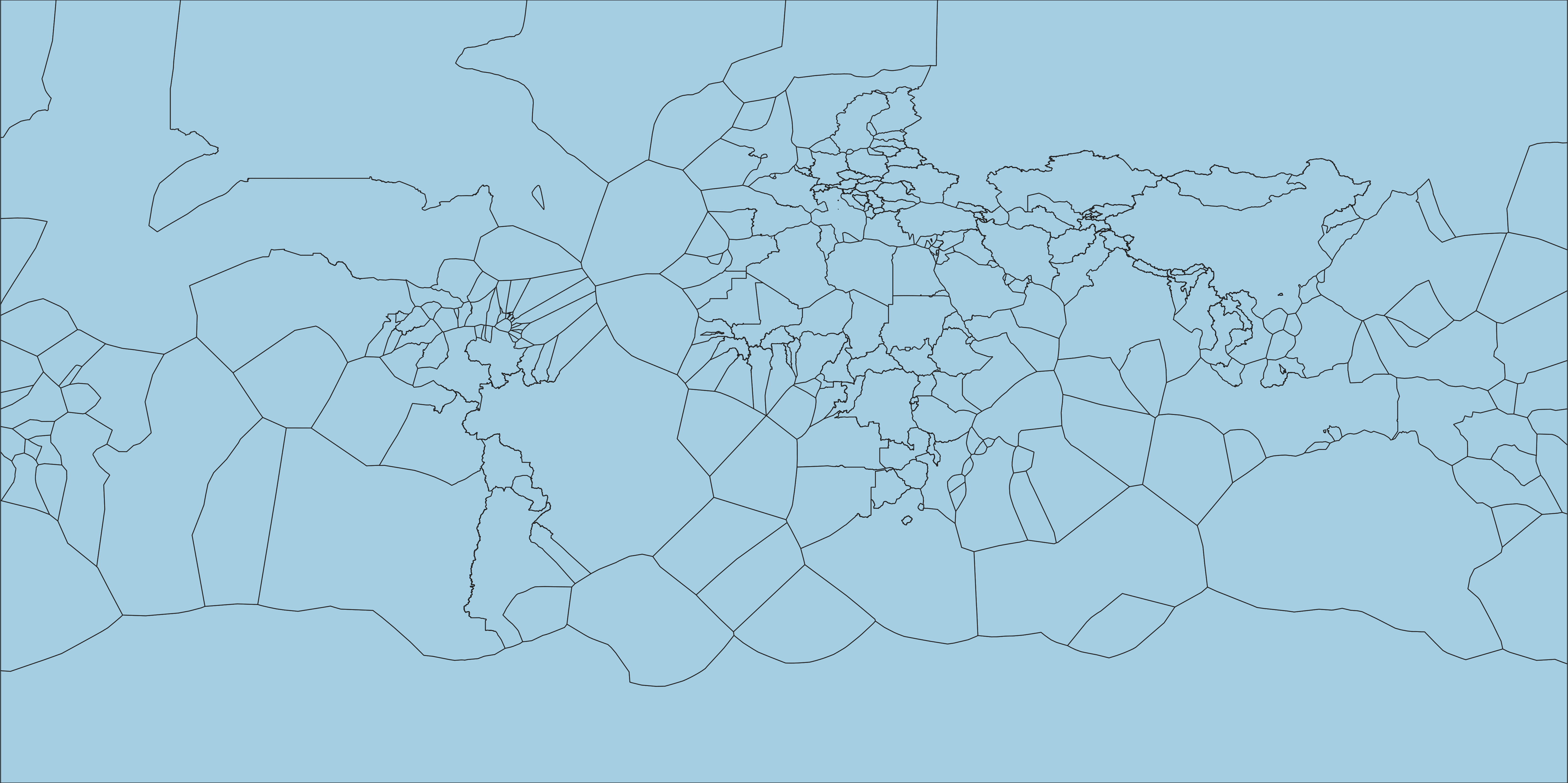 |
| Original ADM0 | Coastline replaced with OSM |
|---|---|
 |
 |
In the PostGIS implementation of voronoi polygons, inputs with sliver gaps between polygons or a regular grid from rasters converted into vectors can sometimes result in outputs with invalid geometry, giving one of the following errors:
- GEOSVoronoiDiagram: TopologyException: Input geom 1 is invalid: Self-intersection at
- GEOSVoronoiDiagram: IllegalArgumentException: Invalid number of points in LinearRing found 2 - must be 0 or >= 4
If this does occur, try increasing the default snap value from 0.000001 to 0.000002 or 0.000003, which solves the issue in most situations. If this still does not resolve the issue, try increasing the segment value instead from 0.0001 to 0.0002 or 0.0003. Keep increasing either value until the process succeeds.
| Possible Error (segment=0.0001) | Succeeds (segment=0.0003) |
|---|---|
 |
 |